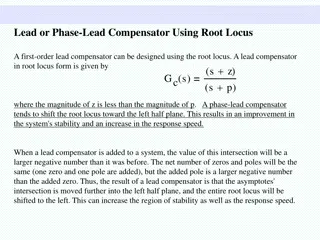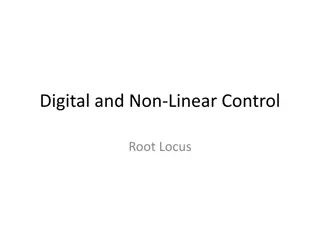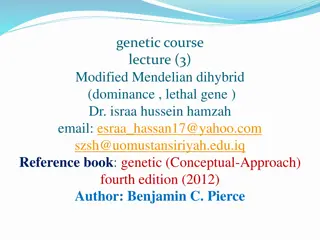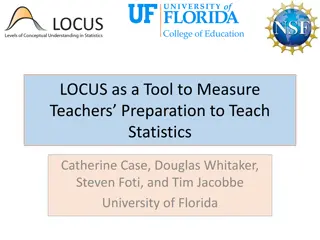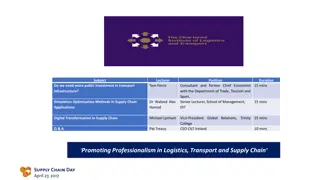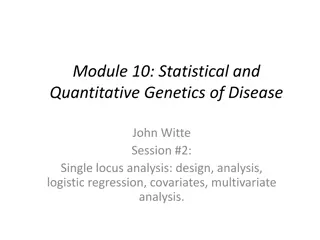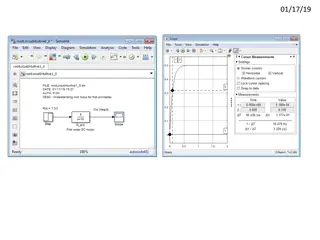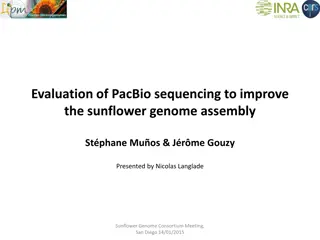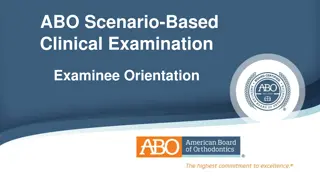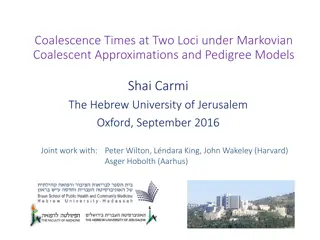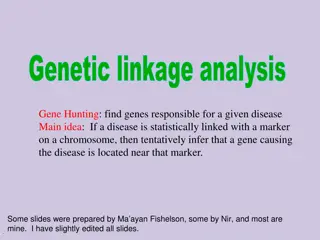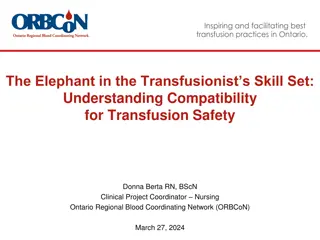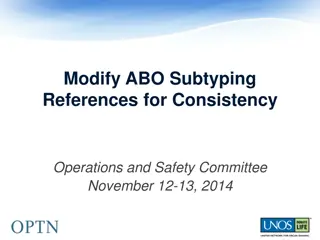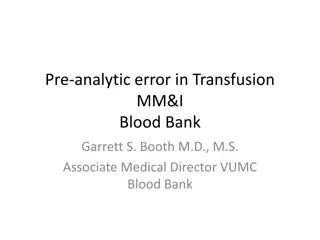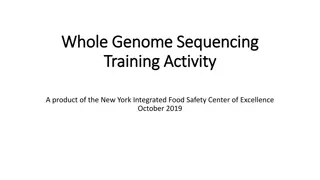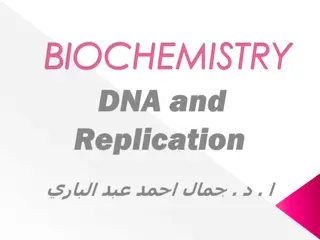Understanding Human Blood Groups and Genetics
Human blood groups are determined by the presence or absence of specific antigens and antibodies. The ABO system categorizes blood into four types (A, B, AB, O), while the Rh factor (D antigen) determines whether blood is RhD positive or negative. Blood group antigens are crucial for safe transfusio
2 views • 14 slides
Comprehensive ABO Clinical Exam Domains Assessment for School Case
This presentation covers the evaluation of ABO clinical exam domains in a school case scenario, including data gathering, treatment planning, implementation, critical analysis, and outcomes assessment. Various images illustrate the different aspects of the assessment process.
2 views • 14 slides
Understanding Blood Groups and Their Significance
Human blood types are determined by specific antigens and antibodies present on red blood cells, influencing crucial aspects like blood transfusions and familial relationships in forensic medicine. The ABO system, with its four main blood types (A, B, AB, O), plays a vital role in categorizing blood
7 views • 14 slides
Understanding Lead and Phase-Lead Compensators
Lead and Phase-Lead compensators play a crucial role in improving system stability and response speed. By using the root locus and frequency response methods, these compensators shift the root locus toward the left half-plane, adding positive phase over the frequency range. This leads to increased s
0 views • 16 slides
Understanding Blood Groups, Clotting Time, and Bleeding Time in Medical Practice
This informative material delves into the significance of determining blood groups, clotting time, and bleeding time in medical settings. From explaining the ABO and Rhesus systems to outlining the practical objectives and procedures for the assessments, this resource aims to enhance understanding o
0 views • 34 slides
Understanding Root Locus Method in Control Systems
The root locus method in control systems involves tracing the path of roots of the characteristic equation in the s-plane as a system parameter varies. This technique simplifies the analysis of closed-loop stability by plotting the roots for different parameter values. With the root locus method, de
0 views • 41 slides
Blood Grouping Techniques: Methods and Advantages
Various blood grouping techniques including slide or tile method and microplate technique are discussed. Advantages of microplate ABO grouping such as cost-effectiveness, automation potential, and reduction in errors are highlighted. The use of different manual methods and newer techniques in blood
0 views • 11 slides
Understanding Dominance in Genetics: The Role of Alleles and Phenotypes
Dominance in genetics refers to the interaction of alleles at the same gene locus. Complete dominance occurs when one allele masks the effect of another in a heterozygous genotype, leading to a phenotype indistinguishable from the dominant homozygote. This concept is crucial for predicting genetic o
1 views • 18 slides
Understanding ABO Blood Grouping and Rh Groups
ABO blood grouping and Rh factor testing are crucial for blood transfusions and forensic medicine. The presence or absence of specific antigens and antibodies in human blood determines blood type. Genetic inheritance from parents establishes blood type, with codominance influencing offspring phenoty
0 views • 13 slides
Why Do We Match Blood for Patients?
Blood matching for patients is crucial to prevent adverse reactions like hemolysis and death. ABO and RhD compatibility testing are fundamental, along with selecting antigen-negative units for patients with clinically significant antibodies. Beyond mandatory requirements, matching can be complex due
0 views • 9 slides
Understanding Rh Immunization and Blood Group Incompatibility
Rh immunization and blood group incompatibility can lead to serious complications in fetuses and newborns. The ABO and Rhesus systems play crucial roles in determining blood group compatibility. Rh-positive red cells of the fetus entering the maternal circulation can trigger immune responses, leadin
0 views • 65 slides
Assessing Teachers' Preparation to Teach Statistics Using LOCUS Tool
Explore how LOCUS assessments serve as a valuable tool to measure teachers' readiness to teach statistics, addressing the challenges in teacher preparation at various educational levels. The assessment focuses on conceptual understanding, experimental design, data collection, and analysis, offering
0 views • 11 slides
Understanding Genetic Inheritance: Going Beyond Mendel
Exploring genetic inheritance beyond Mendel's principles, this content delves into topics like incomplete dominance, codominance, pleiotropy, epistasis, and multiple alleles. Discover how genes interact to shape phenotypes and learn about interesting genetic phenomena like Marfan syndrome and the AB
0 views • 20 slides
Digital Transformation in Supply Chain: Insights from Industry Experts
Explore the significance of digital transformation in supply chain management through expert insights from industry leaders like Michael Lynham and Dr. Waleed Abo-Hamad. Discover key components, drivers, and case studies showcasing the evolution and benefits of digital supply chains. Gain a deeper u
0 views • 28 slides
Statistical and Quantitative Genetics of Disease
This session covers single locus analysis in statistical and quantitative genetics, focusing on design, analysis, logistic regression, covariates, and multivariate analysis. It discusses approaches for analyzing DNA on cases and controls, modeling, and adjusting for covariates. The association analy
0 views • 36 slides
Understanding Root Locus Plots for Control Systems
Exploring the concept of root locus plots in control systems through a detailed analysis of feedback systems, rise time optimization, steady-state errors, and closed-loop response predictions. The content discusses the impact of varying proportional gain on system performance, practical examples fro
0 views • 20 slides
Understanding Antibody Screening and Pre-Transfusion Tests
In-house cell panel development, pre-transfusion compatibility testing, antibody screening methods, and the importance of ABO and Rh typing are discussed in detail. Steps for safe blood transfusion, reverse ABO grouping, AST testing for irregular antibodies, and selection criteria for screen cells i
0 views • 28 slides
Understanding Objective Personality Tests and Traits
Explore various objective personality tests and traits, including examples of uni-dimensional traits such as Locus of Control, Type A/B personalities, Tolerance for Ambiguity, Need for Cognition, Bem Sex-Role Inventory, and more. Delve into the concepts introduced by psychologists like Julian Rotter
0 views • 14 slides
Evaluation of PacBio Sequencing to Improve Sunflower Genome Assembly
Presentation at the Sunflower Genome Consortium Meeting in San Diego discussed the use of PacBio sequencing to enhance the sunflower genome assembly, with evaluations on PacBio data's effectiveness at locus and genome scales. Results highlighted challenges and successes in improving assembly quality
0 views • 15 slides
Challenges in Managing O- Red Cell Component Blood Supply
Addressing the challenges of managing O- red cell component blood supply involves considerations such as compatibility rules, absolute and relative indications, EBA benchmark comparisons, data monitoring, case studies, D variant specifications, and recommendations for transfusions. The supply side c
0 views • 39 slides
Land Law Reform Act 2009: Section 31 Applications Overview
This overview delves into Section 31 of the Land and Conveyancing Law Reform Act 2009, discussing the broader locus standi test for applicants seeking court orders related to co-owned land. It also touches on potential plaintiff categories under Section 31(1), covering aspects like qualified cohabit
0 views • 32 slides
ABO-Incompatible Heart Transplants: History, Rationale, and Outcomes
ABO-incompatible heart transplants have become a crucial option due to limited pediatric organ donors. The rationale behind such transplants includes the development of antibodies post-6 months. Despite detectable donor-specific isohemagglutinins, successful outcomes have been achieved. Current crit
0 views • 17 slides
ABO Clinical Examination Guidelines at Scantron Testing Centers
This document provides crucial information for examinees taking the ABO Scenario-Based Clinical Examination at Scantron Testing Centers. It covers exam format, time allocation, question structure, guidelines for answering, and rules regarding exam conduct. Examinees must follow instructions carefull
0 views • 37 slides
Coalescence Times at Two Loci under Markovian Coalescent Models
This presentation discusses coalescence times at two loci using Markovian coalescent approximations and pedigree models. The speaker, Shai Carmi from The Hebrew University of Jerusalem, presents joint work with other researchers, focusing on the ARG, SMC, and the effect of shared pedigree on estimat
0 views • 21 slides
Understanding Gene Hunting and Disease Genes in Human Genetics
Gene hunting involves finding genes responsible for diseases by statistically linking them with markers on chromosomes. This process relies on the logical structure of chromosomes, genotypes versus phenotypes, recombination phenomena, and specific loci like the ABO locus on Chromosome 9. By analyzin
0 views • 18 slides
Understanding Blood Compatibility for Safe Transfusions
This presentation delves into the critical topic of blood compatibility for safe transfusions, covering aspects such as ABO and Rh blood groups, clinically significant antibodies, and potential incompatibilities. The session aims to enhance understanding of antigens, antibodies, and the risks of mis
0 views • 44 slides
Modification of ABO Subtyping References for Consistency Operations and Safety Committee
The current OPTN policy has inconsistencies in terminology, potentially causing confusion. Proposed solutions aim to clarify requirements for efficient management. Public feedback and resolutions show support for modifications to various policies. Contact information for queries is provided at the e
0 views • 8 slides
Pre-Analytic Errors in Transfusion Process at VUMC Blood Bank
The case study discusses a 16-year-old female involved in a motor vehicle collision needing emergent transfusion support at Vanderbilt University Medical Center. Issues such as mixed field identification and blood type discrepancies were encountered, leading to the importance of using universal dono
0 views • 23 slides
Understanding Locus Standi in Legal Litigation
Introduction to the traditional doctrine of locus standi in private law litigation, focusing on the concept of standing to sue and the enforcement of one's legal rights. The article delves into the principles of standing to sue, including the right of a party to appear before a court of law and inst
0 views • 48 slides
Understanding Whole Genome Sequencing in Public Health Training
This training activity conducted by the New York Integrated Food Safety Center of Excellence in October 2019 focuses on educating public health staff/students on the application of Whole Genome Sequencing (WGS) and whole genome multi-locus sequence typing (wgMLST) for subtyping. Through a mock case
0 views • 12 slides
Insights into DNA Replication and Chromosome Structure
DNA replication is a fundamental process vital for the transmission of genetic information. Chromosomes, composed of DNA-protein complexes, store genetic information, and replication involves the synthesis of new DNA molecules. Enzymes play crucial roles in DNA synthesis, and in E. coli cells, repli
0 views • 16 slides



